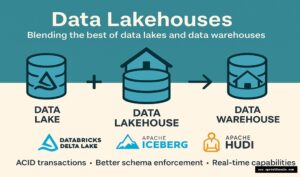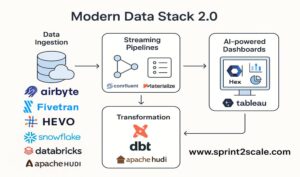Table Of Content
- The Illusion of Size: Misunderstanding the Essence of Scaling
- Defining Agile Scaling: A Brief Overview
- The Fallacy of “One Size Fits All”
- Overlooking Organisational Culture
- Leadership Challenges: Navigating the Maze of Change
- Leadership Alignment and Buy-In
- The Role of Middle Management in Agile Scaling
- Resistance to Change and Fear of the Unknown
- Lack of Clear Vision and Strategy: The Foundation of Failure
- The Importance of a Coherent Agile Vision
- The Need for Strategic Alignment
- Balancing Short-Term Wins with Long-Term Goals
- Inadequate Training and Skill Development: Bridging the Competency Gap in Agile Scaling Transformations
- The Myth of Instant Mastery
- The Crucial Role of Continuous Learning
- Addressing Skill Gaps Across the Organization
- Tooling and Technology: The Double-Edged Sword in Agile Scaling Transformations
- Overreliance on Tools: A Common Pitfall
- Ensuring Compatibility and Integration
- Striking a Balance between Automation and Human Expertise
- Organizational Structure and Design: The Silent Saboteurs of Agile Scaling Transformations
- The Impact of Traditional Hierarchies
- The Challenge of Cross-Functional Collaboration
- Rethinking Departmental Silos
- Agile Metrics Mismanagement: Navigating the Maze of Measuring What Matters
- Shifting from Traditional Metrics to Agile Metrics
- The Dangers of Vanity Metrics
- Creating a Balanced Scorecard for Agile Success
- Incomplete or Inconsistent Implementation: The Domino Effect in Agile Scaling Transformations
- The Importance of Full-Scale Adoption
- Identifying and Addressing Implementation Gaps
- Sustaining Momentum Beyond the Initial Phases
- Cultural Transformation Challenges: Nurturing an Agile Mindset in the Organization
- Nurturing an Agile Mindset
- Breaking Down Cultural Barriers
- Fostering a Continuous Improvement Culture
- The Path Forward: Lessons Learned and Best Practices in Agile Scaling Transformations
- Learning from Failure: A Catalyst for Improvement
- Iterative Adaptation: Embracing Change Along the Journey
- The Role of Leadership in Course Correction
- Cultivating a Learning Organization: The Cornerstone of Agile Scaling
- Conclusion
In recent years, Agile methodologies have gained widespread recognition and adoption in the software development industry. Organisations seeking to enhance their adaptability and responsiveness to change often embark on Agile scaling transformations, aiming to extend Agile principles beyond individual teams to entire enterprises. While the promise of increased efficiency, collaboration, and innovation is alluring, the reality is that many Agile scaling transformations fall short of expectations. In this comprehensive exploration, we will delve into the intricate reasons behind the failures of Agile scaling transformations, analysing the challenges, misconceptions, and inherent complexities that organisations encounter on their Agile journey.

The Illusion of Size: Misunderstanding the Essence of Scaling
In the vast landscape of Agile scaling, organisations often grapple with a fundamental misconception – the illusion that scaling Agile is a one-size-fits-all endeavour. This misunderstanding is at the core of many failures in Agile transformations that aim to extend the principles beyond individual teams to the entire enterprise. To truly comprehend the challenges associated with the illusion of size, it’s essential to explore the nuances of Agile scaling, dispel common myths, and emphasise the critical role of organisational culture.
Defining Agile Scaling: A Brief Overview
Agile scaling is not a mere replication of Agile methodologies at the team level on a grander scale. It involves extending Agile principles and practices across multiple teams and often entire organisations. The essence lies in maintaining the agility and responsiveness that characterise smaller Agile teams while orchestrating a harmonious symphony of collaboration at a larger organisational level.
However, the illusion of size creeps in when organisations view Agile scaling as a straightforward, uniform process. In reality, every organisation is unique, with its own set of challenges, culture, and goals. What works seamlessly for one may prove counterproductive for another.
The Fallacy of “One Size Fits All”
The tendency to adopt a standardised approach to Agile scaling is a prevalent pitfall. Organisations, mesmerised by the success stories of others, may attempt to replicate their strategies without considering the contextual differences. This fallacy often leads to a mismatch between the chosen Agile scaling framework and the organisation’s specific needs.
Frameworks like SAFe (Scaled Agile Framework), LeSS (Large-Scale Scrum), or Nexus provide structures for scaling Agile, but blindly adhering to any one framework without customisation is a recipe for failure. The illusion of a universal solution distracts organisations from the essence of Agile scaling: adapting and evolving based on their unique context.
Overlooking Organisational Culture
A critical aspect often underestimated in the illusion of size is the impact of organisational culture on Agile scaling. Culture, the collective mindset, values, and behaviours of an organisation, plays a pivotal role in determining the success or failure of Agile transformations.
Organisations that neglect cultural alignment may find themselves in a perpetual struggle. The clash between existing cultural norms and the principles of Agile can create resistance, impeding the very adaptability and collaboration Agile intends to foster. Embracing Agile requires a cultural shift – one that values transparency, open communication, and a willingness to learn from mistakes.
To truly address the illusion of size, organisations must acknowledge and embrace their unique context. Agile scaling is not a one-time, uniform implementation but a dynamic, adaptive journey that requires continuous assessment, learning, and customisation to thrive within the distinctive culture of each organisation. The essence of scaling lies not in the size of the organisation but in its ability to tailor Agile principles to its specific needs, fostering a culture that sustains and enhances agility across all levels.
Leadership Challenges: Navigating the Maze of Change
In the turbulent waters of Agile scaling transformations, leadership emerges as both the captain steering the ship and the lighthouse guiding the way. However, navigating the maze of change presents unique challenges for leaders, challenges that extend beyond mere project management into the realm of organisational culture, communication, and the intricate dynamics of human behavior.
Leadership Alignment and Buy-In
One of the foundational challenges in Agile scaling transformations is ensuring leadership alignment and buy-in. Leaders at all levels must not only understand the principles of Agile but fully embrace and champion the change. The absence of unified support from leadership can create a ripple effect, leading to confusion and resistance among teams.
Effective leadership alignment requires more than a superficial acknowledgment of Agile values; it demands a genuine commitment to a cultural shift. Leaders should be visible advocates for Agile methodologies, demonstrating through their actions and decisions that agility is not just a buzzword but a fundamental shift in how the organisation operates.
The Role of Middle Management in Agile Scaling
While upper-level leadership sets the tone, middle management often becomes the linchpin in the success or failure of Agile scaling. Middle managers serve as the bridge between high-level strategic decisions and the day-to-day operations of teams. They must translate the vision of Agile scaling into actionable plans and guide their teams through the transformation.
However, middle management can also become a bottleneck if they resist the change or fail to adapt their management style. The shift from a command-and-control approach to a more collaborative, servant leadership model requires a nuanced understanding and commitment from middle managers. Their ability to navigate this shift determines the extent to which Agile principles permeate the organisation.
Resistance to Change and Fear of the Unknown
Change is inherently challenging, and Agile scaling is no exception. Resistance often stems from a fear of the unknown, a fear of losing control, or concerns about job security. Leaders must acknowledge and address these fears head-on, fostering a culture that encourages curiosity, learning, and adaptability.
Communication plays a pivotal role in overcoming resistance. Leaders need to articulate the ‘why’ behind the transformation, highlighting the benefits not just for the organisation but for individual team members. Transparent and continuous communication helps dispel rumours, build trust, and create a shared understanding of the journey ahead.
To tackle resistance effectively, leaders should also invest in change management strategies. This involves identifying potential sources of resistance, proactively addressing concerns, and creating a support system to guide individuals and teams through the evolving landscape of Agile practices.
Successfully navigating the leadership challenges in Agile scaling requires a strategic blend of visionary leadership, effective communication, and a keen understanding of the human side of change. Leaders must not only champion Agile principles but also cultivate a culture that values continuous improvement, experimentation, and resilience. As the navigators of change, leaders play a pivotal role in steering the ship through the maze, ensuring that the organisation emerges on the other side stronger, more adaptive, and truly Agile.
Lack of Clear Vision and Strategy: The Foundation of Failure
In the intricate dance of Agile scaling transformations, a lack of clear vision and strategy serves as a silent saboteur, undermining the very foundation upon which successful transformations are built. The absence of a cohesive, well-defined roadmap can lead organizations into a maze of uncertainty, where Agile principles become a vague aspiration rather than a guiding force for change. To grasp the magnitude of this challenge, it’s crucial to delve into the components of a clear vision and strategy and explore the repercussions when these are missing.
The Importance of a Coherent Agile Vision
A clear and compelling vision is the North Star guiding organizations through the turbulent seas of transformation. In the context of Agile scaling, this vision should transcend mere adherence to a specific framework. It should encapsulate the fundamental values of Agile – collaboration, adaptability, customer focus, and continuous improvement – and convey how these principles align with the organization’s broader mission and goals.
A vision serves as a unifying force, aligning teams and leadership towards a common purpose. When this vision is absent or unclear, teams may drift in different directions, pulling the organization apart rather than propelling it forward. The lack of a shared understanding of where the organization is headed can lead to confusion, resistance, and a fragmented implementation of Agile practices.
The Need for Strategic Alignment
A clear vision must be complemented by a well-crafted strategy that outlines the steps to transform the vision into reality. Strategic alignment ensures that every initiative, decision, and action contributes cohesively to the overarching goals of the Agile scaling transformation. Without this alignment, organizations risk a disjointed and chaotic implementation that falls short of delivering the promised benefits.
Strategic planning involves not only selecting an appropriate Agile framework but also tailoring it to the organization’s unique context. It requires a deep understanding of current processes, cultural nuances, and the specific challenges that Agile practices aim to address. When organizations overlook the need for strategic alignment, they often resort to a superficial adoption of Agile, leading to disillusionment and a sense of unmet expectations.
Balancing Short-Term Wins with Long-Term Goals
In the pursuit of Agile scaling, organizations may succumb to the allure of quick wins at the expense of long-term goals. While achieving immediate improvements is gratifying, it’s essential to maintain a strategic perspective that ensures these gains contribute to the sustained success of the transformation.
A lack of long-term planning can result in a series of disconnected, short-lived victories that fail to create a lasting impact. Organizations might celebrate the successful implementation of Agile practices in isolated pockets without considering the broader systemic changes required for true scaling. This myopic approach can lead to frustration as the organization grapples with the persistent challenges that were never addressed in the rush for quick wins.
To navigate the Agile scaling journey successfully, organizations must prioritize the development and communication of a clear vision and strategy. These foundational elements act as a compass, guiding every decision, action, and adjustment throughout the transformation. In their absence, organizations risk drifting into the sea of uncertainty, where the promise of Agile scaling remains elusive, and the foundation of failure becomes increasingly entrenched.
Inadequate Training and Skill Development: Bridging the Competency Gap in Agile Scaling Transformations
In the intricate tapestry of Agile scaling, the success of the transformation hinges not only on the commitment of leadership and the clarity of vision but also on the competence of the individuals tasked with implementing and sustaining Agile practices. Inadequate training and skill development represent a critical bottleneck that, if left unaddressed, can undermine the very fabric of Agile scaling. To unravel the complexities of this challenge, it’s imperative to explore the nuances of training and skill development in the context of Agile scaling and the repercussions of neglecting this crucial aspect.
The Myth of Instant Mastery
Agile methodologies introduce a paradigm shift in how teams collaborate, communicate, and deliver value. Yet, the misconception persists that individuals can seamlessly transition to Agile practices without proper training. This myth of instant mastery neglects the fact that Agile requires a fundamentally different mindset and skill set, especially at the scale of an entire organization.
Inadequate training can manifest in various ways, from a superficial understanding of Agile principles to a resistance to change stemming from a lack of familiarity with the new practices. Training programs must go beyond theoretical knowledge, providing practical experiences and simulations that allow individuals to internalize Agile concepts and apply them in real-world scenarios.
The Crucial Role of Continuous Learning
Agile is not a one-time implementation; it’s a journey of continuous improvement. Inadequate training often stems from a failure to recognize the evolving nature of Agile methodologies. Teams and individuals must be equipped with the skills to adapt to changing circumstances, incorporate feedback, and refine their Agile practices iteratively.
Continuous learning is not just a nice-to-have but a necessity in the dynamic landscape of Agile scaling. It involves fostering a culture of curiosity, experimentation, and a commitment to staying abreast of emerging Agile practices and industry trends. Without this emphasis on ongoing education, organizations risk stagnation and the erosion of the Agile mindset over time.
Addressing Skill Gaps Across the Organization
In the rush to implement Agile scaling, organizations may overlook the diverse skill sets required for success. Agile is not only about development teams; it involves every facet of the organization, from marketing and finance to human resources and beyond. Neglecting to address skill gaps across these diverse domains can lead to a fragmented Agile implementation.
Effective training programs should be tailored to the specific needs of different roles within the organization. For instance, a developer’s training requirements differ significantly from those of a product manager or a business analyst. Recognizing these nuances and delivering targeted training ensures that every individual contributes effectively to the overall Agile transformation.
Inadequate training and skill development can result in a workforce ill-equipped to navigate the complexities of Agile scaling. It’s not merely about learning new practices but instilling a mindset that embraces change, collaboration, and continuous improvement. Organizations must invest in comprehensive training programs that cater to the diverse needs of their teams, fostering a culture of learning that becomes ingrained in the fabric of the organization. In doing so, they bridge the competency gap and fortify the foundation of Agile scaling for sustained success.
Tooling and Technology: The Double-Edged Sword in Agile Scaling Transformations
In the realm of Agile scaling, the allure of tools and technology is palpable. The promise of increased efficiency, collaboration, and transparency propels organizations towards an array of Agile tools designed to streamline processes and enhance communication. Yet, this seemingly straightforward solution is a double-edged sword, presenting both opportunities and pitfalls that, if not navigated carefully, can hinder rather than accelerate Agile scaling transformations.
Overreliance on Tools: A Common Pitfall
Agile tools are invaluable assets when used judiciously, providing teams with the means to manage backlogs, track progress, and facilitate collaboration. However, the pitfall lies in overreliance, where organizations view tools as a panacea for Agile-related challenges. Tools are not a substitute for the underlying principles of Agile; they are enablers, not drivers, of successful transformations.
Overemphasis on tools can lead to a mechanical, checkbox approach to Agile adoption. Teams may become fixated on tool usage rather than embodying Agile values and principles. The danger here is that the tool becomes the focal point, overshadowing the critical human elements of communication, collaboration, and adaptability that Agile methodologies emphasize.
Ensuring Compatibility and Integration
The expansive landscape of Agile tools presents another challenge: ensuring compatibility and integration. Organizations often adopt a myriad of tools, each catering to a specific aspect of the Agile process, leading to fragmentation and data silos. Without seamless integration, the flow of information across teams is impeded, hindering collaboration and real-time decision-making.
Integrating tools effectively requires a strategic approach, with a focus on selecting tools that complement each other and align with the organization’s overall strategy. Moreover, interoperability is not just a technical challenge; it demands a cultural shift where teams recognize the importance of sharing information across tools and breaking down silos.
Striking a Balance between Automation and Human Expertise
Automation is a cornerstone of Agile scaling, streamlining repetitive tasks and enabling teams to focus on value-added activities. However, the danger lies in an overemphasis on automation at the expense of human expertise. Agile is fundamentally about people and interactions, and tools should augment, not replace, human collaboration.
Striking the right balance involves a thoughtful evaluation of where automation enhances efficiency without sacrificing the human elements crucial to Agile success. Organizations must recognize that tools are a means to an end, empowering teams to deliver value more effectively but not replacing the need for skilled individuals who can adapt, communicate, and collaborate in complex and evolving environments.
In the world of Agile scaling, tools and technology offer immense potential, but their effective utilization requires a strategic and mindful approach. Organizations must guard against the pitfalls of overreliance, prioritize compatibility and integration, and strike a delicate balance between automation and human expertise. By viewing tools as enablers rather than solutions in themselves, organizations can harness their full potential in the service of Agile scaling transformations.







No Comment! Be the first one.